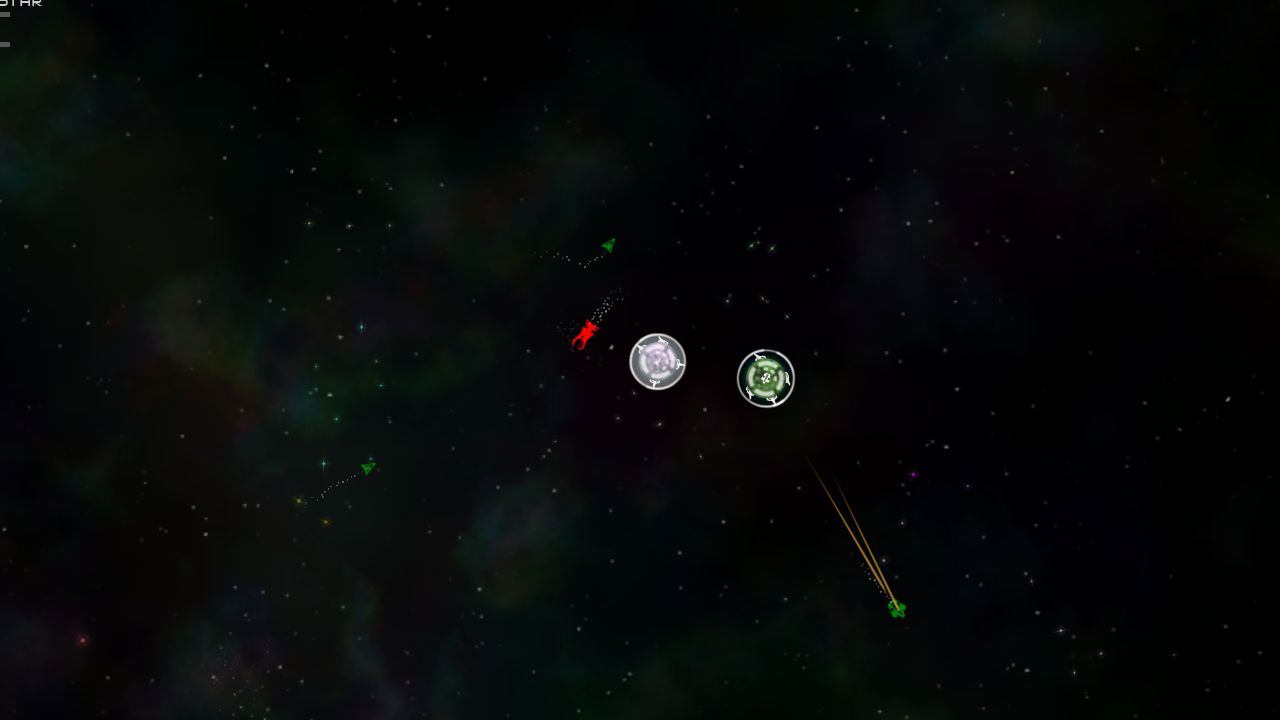
For example, if the player controls a small star and collides against a medium star, the player will be disintegrated while the AI-controlled star will be reduced to a small star. If both stars collide, they will be reduced to a lesser size within the same type of object. They are also able to attract planetary systems composed of stars with lower mass than that of the player, or being attracted to stars with bigger mass. Growing the star will increase its gravitational force, which increases the number of planets the planetary system can have. The player can also create multi-star systems by selecting planets from their system and make them absorb asteroids until they become another star. Life forms will disappear, but the player is able to attract planets to form a planetary system, further grow the star by absorbing other planets, or a combination of both. If the player wishes, they can accumulate more mass until their planet becomes a star. At this point, life forms will evolve in the planet, creating spaceships, planetary shields and cannons. From there, the player has to absorb other asteroids to make their planet grow enough to become a life planet crashing against other objects will decrease the player's mass. Īt the beginning of the game, the player accumulates mass by colliding their asteroid against other asteroids until enough mass has been gathered to become a small planet. All the spaceships in the map are controlled by the game's artificial intelligence (AI), and they will constantly engage in combat against enemy ships, asteroids or planets to destroy them. Spaceships are coloured green if they belong to the player's planet, or to a planet that belongs to the player's planetary system red if they belong to an enemy planet or planetary system and white if they don't belong to any planet or system. They appear on planets sufficiently big to store life, and are represented by a variety of ships of different size and attack power.

The game takes place in a borderless and randomly generated universe, filled with asteroids, planets, stars and planetary systems.

A mission start circle can be seen, along with arrows pointing to the other available missions. It was awarded the first prize at the 2011 Microsoft Dream Build Play competition, and was among the video games showcased at the 10th Penny Arcade Expo.Ī player controls a medium size star with 5 orbiting planets. Solar 2 received mainly positive reviews from video game journalists, scoring 72 out of 100 on aggregate website Metacritic. It was developed over ten months and includes a score composed by sound designer and musician JP Neufeld.

The game is a sequel to Solar (2009), and features most of the same key gameplay elements of its predecessor, expanded and polished considerably. The game follows the player in their mission to accumulate enough mass to become several astronomical objects, eventually becoming a Big Crunch, which then produces a Big Bang. The game was developed with Microsoft's XNA tools, and its development was inspired by indie games such as flOw.
#Solar 2 windows
It was released on 17 June 2011 on Steam for Microsoft Windows and on 19 June 2011 on Xbox Live Indie Games for the Xbox 360. Solar 2 is an open world sandbox video game developed by Australian developer Jay Watts' video game studio, Murudai.


 0 kommentar(er)
0 kommentar(er)
